Lara Mimosa Montes
The Bronx: A Bibliography
- Born in the Bronx
- Queer Catholics
- Lauren Bacall
- Colored Me
- Black and Abstract
- The Golden Hour
- No Respect
- No Hands
- Parentheticals
- Who Killed Teddy Bear?

Born in the Bronx
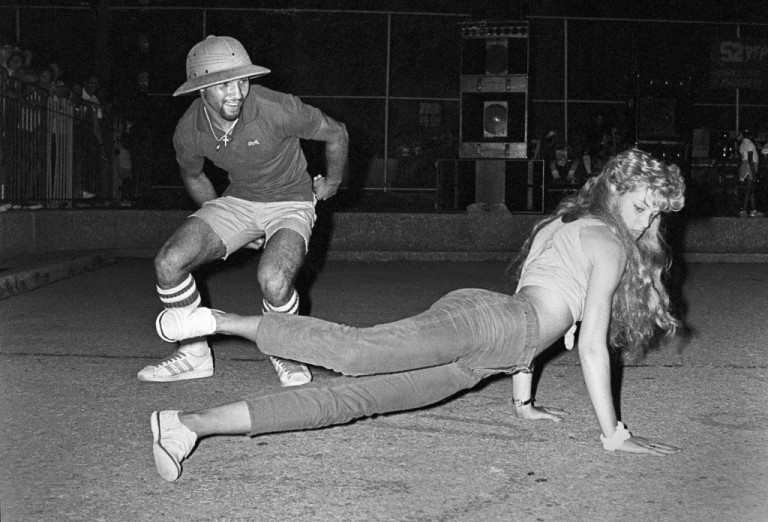
Image credit: Ricky Flores, 52 Park, 1984
Abel Ferrara was born in the Bronx.
Robert Altman was born in the Bronx.
Sal Mineo was born in the Bronx.
Lauren Bacall was born in the Bronx.
Joan Semmel was born in the Bronx.
Okwui Okpokwasili was born in the Bronx.
Linda Lovelace was born in the Bronx.
Vito Acconci was born in the Bronx.
Eleanor Antin was born in the Bronx.
Rosalyn Drexler was born in the Bronx.
Clement Greenberg was born in the Bronx.
Gerard Malanga was born in the Bronx.
Ronnie Landfield was born in the Bronx.
The Kuchar Brothers were born in the Bronx.
Harold Bloom was born in the Bronx.
Christine Jorgensen was born in the Bronx.
Sonia Sotomayor was born in the Bronx.
Larry Rivers was born in the Bronx.
Calvin Klein was born in the Bronx.
Häagen-Dazs® was born in the Bronx.
Lawrence Weiner was born in the Bronx.
Glenn Ligon was born in the Bronx.
Jayson Musson was born in the Bronx.
Queer Catholics

Image credit: George Kuchar, Hold Me While I’m Naked, 1966
“There’s a lot of things in life worth living for, isn’t there?” When I’m feeling awkward, or despondent, I often linger over this last line in Kuchar’s cult classic Hold me While I’m Naked. I take a comfort in his words, all their queer Catholic longing. When I visit the Bronx, even if it’s just in my imagination, George remains one of the saints to whom I still pray. Pensando en ti— we would be nothing if not for our contradictions.
Lauren Bacall
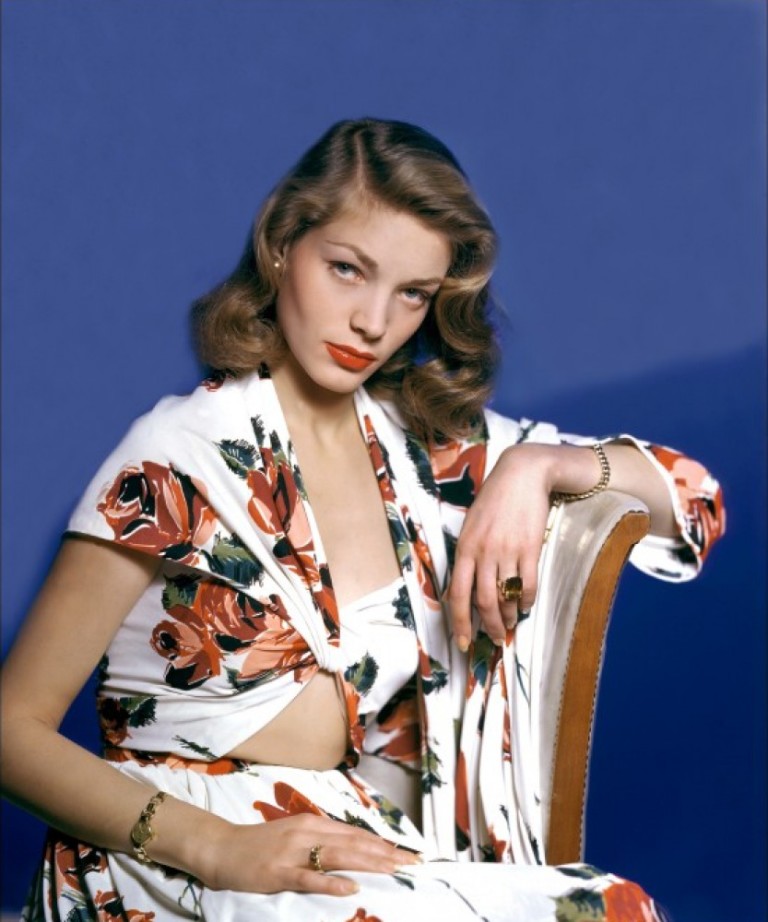
Miss Greenwich Village awarded 1942. I came to know Lauren Bacall by way of The Kuchar Brothers, not personally, but as a doing, a cinematic working-through. The Kuchars, like Rainer Werner Fassbinder, had internalized her, and I, them. Deep within that pouty mouth resides an era’s engine. If it’s forced, is it still feminine? See Douglas Sirk’s Written on The Wind where white male hysteria is a booming, blustering thing.
Colored Me
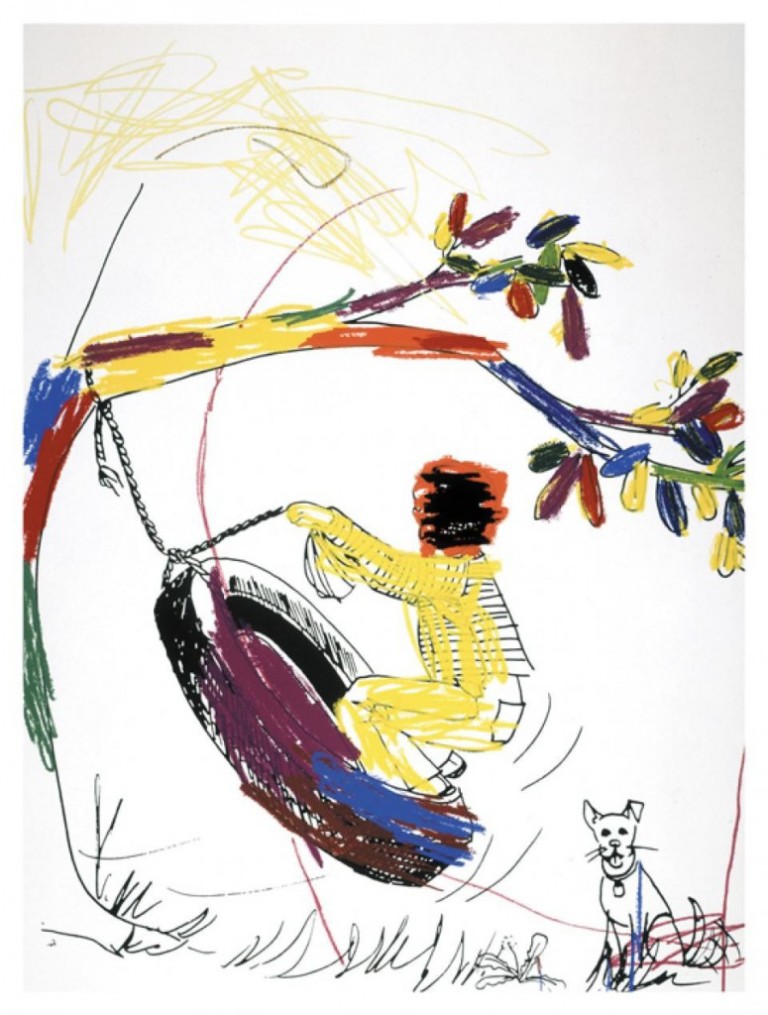
Image credit: Glenn Ligon, Boy on Tire, 2004
In her autobiographical essay, “How it Feels to be Colored Me,” Zora Neale Hurston observes in her journey from Eatonville to Jacksonville at age 13 she had become “a little colored girl.” Oh! The instant I see myself as colored is not unlike the instant I start to suspect I am wearing something part acrylic. Such revelations do something very real to my sense of comfort, my sense of self. Have you ever felt your skin wear you at the moment when you have discerned you must wear it? When I moved to Minneapolis, I fretted. Nervous, I watched a lot of noir. Was I the detective or one of the derelicts? In this land of whiteness, it is imperative that I know the difference.
Black and Abstract
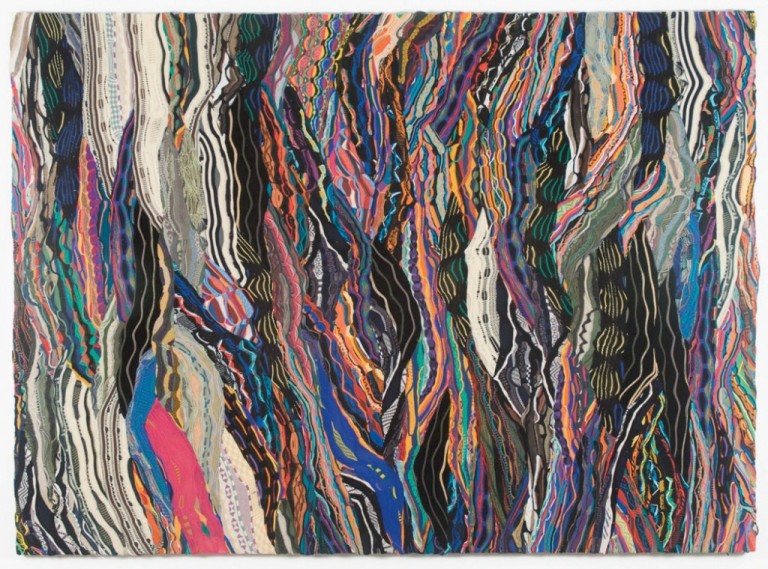
Image credit: Jayson Musson, How Do You Get From Here to the Rest of the World?, 2012, mercerized cotton stretched over cotton, 70 by 96 inches
In order to be recognized as a painter, does one need to work, primarily, with paint? Or can “a painting” made out of Coogi sweaters still be considered a “cozy” thing? Embedded in Musson’s canvases is so much color, so much cognitive dissonance.
This condition of colored unknowing casts me into a philosophical state, and whereas I could refer to Wittgenstein’s Philosophical Investigations, I will instead defer to the words of the artist: Blackness can be located in abstraction if a Black artist chooses to take up the task of producing abstract paintings.
Fair enough. Having been made by a Black artist, these “paintings” are therefore “Black.”
The Golden Hour

Image credit: Ronnie Landfield, On the Rise, 2007
“Time isn’t separate from color because color is about change.” – Amy Sillman
Layers of deep peach and dandelion disperse among the pumpkin patch of poppy reds.
To myself I would like to bind them.
In a Landfield, light comes from elsewhere. It just pours in, at the right moment, always at the golden hour, the magic hour, which either follows a sunrise or precedes a sunset.
During the golden hour, daylight enters and gathers the day’s various dreamy reds.
The Bronx is no longer a place I know, and yet I struggle still to recognize it.
No Respect

One of Gerard Malanga’s books is called No Respect. It’s a bit of a Bronx sentiment, isn’t it? When we met a few years back, we bonded over our Bronxness, as if it were this sacred, mythic thing. It is and it isn’t: like an urban Atlantis, Proust’s Combray.
Once, someone informed me that young French people use “the Bronx” as a kind of cosmopolitan placeholder to express (or abstract) feelings of melancholy or resentment. Like if a party is not to you and your crew’s liking, you say, “This is the Bronx.” See what I mean? No Respect.
No Hands
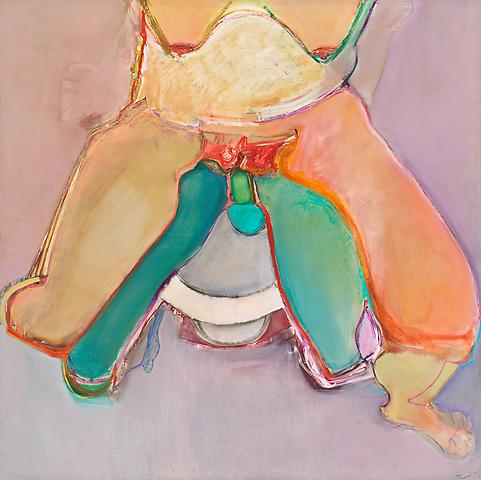
Image credit: Joan Semmel, Hot Seat, 1971
In this early painting, Semmel seizes the image (it’s her signature move) and makes a melee of it, all but squashing that cucumber colored cock. By leaving the hands outside the frame, she frames their intent, their desire: the painterly (pornographic?) moment of capture.
If I were to ever conquer the Bronx, my fists would have to be forged out of bronze.
Parentheticals

Image credit: Vito Acconci
From the Greek for put in beside. Here, there. Minneapolis, The Bronx. Inside my thought is always a second-thought, an afterward to where I originally was.
In this way, a parenthetical helps me occupy
two places at once
(two times at once)
The time of the sentence and the time-after the sentence
(Am I guilty now of being post-nostalgic?).
Parentheses allow me to retreat from myself, as well as say something else. For whom are such secret missives intended? Whoever is listening, I guess. When I’m writing, opposite me, there’s always at least two people: somebody (an abstraction) sitting next to your ghost.
Parentheses outline the places you aren’t.
. . . A strange malamute who goes by the name of “Mr. Shy Guy” (though he is 64.5 cm tall) scatters his hugeness when approached.
Who Killed Teddy Bear?
https://www.youtube.com/embed/-p7b8K1HFuc
A triple-threat, Sal Mineo had all the right moves until he was shot down by an unknown assailant; could you get anymore Bronx? Actually, it happened in West Hollywood. Although “what” exactly happened to Sal, nobody really knows. Before his death, everybody was just as confused (Sal was something of an ethnic enigma), especially after the psychosexual thriller Who Killed Teddy Bear (1965) came out. All cult is classic, but not enough has been said about this film’s bizarre glassy greatness. The best (i.e., camp) commentary can be found in Fassbinder’s Rio das Mortes (1970) where the director dances with Hanna Schygulla in tribute to Sal Mineo’s sexy Bronx strut.
Lara Mimosa Montes
Lara Mimosa Montes is a poet and critic. Her writing has appeared in BOMB, Triple Canopy, DIAGRAM, and Women’s Studies Quarterly. She currently teaches feminist and queer theory at the Minneapolis College of Art and Design. She was born in the Bronx.